Study Material
.avif)

Disaster Management Project Class 9 | Free PDF Download
Home > Class 9 Subject-wise Material
Disaster Management Project Class 9
As part of the CBSE 9th 2024–25 syllabus, students are required to prepare and submit Social Science projects on disaster management. Educart has created a special page filled with inspiring ideas for various parts of this project.
Here, you will find creative cover page designs, well-designed acknowledgment pages, and even complete project files (in video form) showcasing the top projects on disaster management from previous years.

Project Structure
The index, also called the Table of Contents, usually comes after acknowledgment. It contains the main heading of the topics arranged in a sequence. Here is an example for reference purpose.
Start your class 9 project on disaster management by providing a brief introduction and overview of disaster management. Define disaster followed by the definition of disaster management. Use the following reference to understand the meaning of disaster management, and write the intro part of the project.

https://www.undrr.org/terminology/disaster-management
https://nidm.gov.in/PDF/Disaster_about.pdf
https://publichealth.tulane.edu/blog/what-is-disaster-management/
https://www.iwapublishing.com/news/disaster-management
Explain why disaster management is important given India’s diversified climatic conditions. Explain natural catastrophes such as earthquakes, cyclones, floods, droughts, etc.

https://publichealth.tulane.edu/blog/disaster-management-cycle/
Write two different types of natural and man-made disasters, along with examples.
3.1 Natural Disasters
Start with the definition—Natural hazards are environmental events that can affect societies and the human environment. They are different from man-made hazards. For example, a flood caused by changes in river flows is a natural hazard, while a flood caused by a dam failure is a man-made hazard.
Now, describe various natural disasters and their impacts. Quote a few, e.g., of natural disasters like:
- Earthquakes
- Hurricanes/Cyclones
- Volcanic Eruptions
- Avalanche, etc.

https://hazards.fema.gov/nri/natural-hazards
3.2 Man-Made Disasters
Next, write about man-made disasters, how they are caused, etc., along with quoting a few examples, like:
- Industrial Accidents
- Nuclear Disasters
- Environmental degradation

https://sdma-arunachal.in/manmade-disasters/
Mention the vulnerability profile of India, discussing the States and Union Territories that are disaster-prone. Describe all the factors, both natural and man-induced, responsible for the vulnerability of these states.
.avif)
https://iasscore.in/data-story/vulnerability-profile-of-india
https://www.drishtiias.com/to-the-points/paper3/disaster-management-i
Write about the two worst disaster cases in India that impacted the lives of millions of people. Mention the following two:
5.1 Natural Disaster: 2004 Indian Ocean Tsunami

5.2 Man-Made Disaster: Bhopal Gas Tragedy

https://recovery.preventionweb.net/collections/recovery-collection-2004-indian-ocean-earthquake-and-tsunami
Define what disaster risk reduction is, write about all phases and also describe the disaster management cycle.
6.1 Phases of Disaster Management
Under this topic, describe the key phases of disaster management i.e., the pre-disaster phase, the disaster phase, and the post-disaster phase, and mention all the key components of this phase.
- Preparedness
- Rehabilitation

https://home.akitabox.com/blog/4-phases-of-disaster-management/
6.2 Disaster Management Cycle

Mention various national and international bodies and their role in disaster management.
- National Disaster Management Authority (NDMA)
- National Disaster Response Force (NDRF)
- United Nations Office for Disaster Risk Reduction (UNDRR)

Mention the Disaster Management Act of 2005. Highlight the key points and explain how the act is beneficial in disaster management.
As technology develops, so does its application, and it has not left any field unaffected. So, describe how technology helps predict, prepare for, and respond to disasters. Provide examples of technologies used in disaster management, such as early warning systems, GIS mapping, and communication tools.

https://www.drishtiias.com/blog/tech-driven-disaster-management-changing-the-game
Other Measures to Prevent Disasters
Write some of the measures that should be taken to mitigate disasters, for eg:
- Disaster resilient infrastructure
- Climate Change Adaptation
- Environmentally Sustainable Development
- Risk Assessment and Vulnerability Mapping
- Urban Planning and Development
https://www.nextias.com/blog/disaster-management/
Once you have written down all the important points in your disaster management project for class 9, you should summarize the key points discussed in your project and highlight the importance of effective disaster management for community resilience and safety.
The last page of your project should be a bibliography. Here, you have to provide a list of sources you used for your research, whether books, websites, articles, or any other relevant materials.
Below is the list of references used to provide you with all the important information on the disaster management project for class 9. This might be useful for you, so please do check this out.
https://www.iwapublishing.com/news/disaster-management
https://iasscore.in/data-story/vulnerability-profile-of-india https://ebooks.inflibnet.ac.in/geop15/chapter/issues-and-challenges-in-disaster-management/
- Explain the main difference between natural and man-made disasters with examples?
- How many phases are there in Disaster Management cycle?
- What measures can be taken to improve disaster preparedness in communities?
- Describe the role of government agencies in disaster mitigation.
- What are some challenges faced during the response phase of disaster management?
Examples: Cover Images
Here are a few cover page ideas for the disaster management project for class 9.

Examples: Acknowledgement / Index page
Have a look at few creative examples for your project acknowledgement and Index Page.

Videos: Topper Project Files
Here are some video links to inspire your disaster management project.
Project Idea- Video 1
Project Idea- Video 2
Project Idea- Video 3
Project Idea- Video 4
Pdfs: full projects.
Download full project PDF of disaster management file for CBSE class 9

Sample Project 1
Sample Project 2
Sample project 3, sample project 4, sample project 5, sample project 6, other projects.
<red> → <red> SST Social Issues Project for Class 10
<red> → <red> SST Sustainable Development Project for Class 10
<red> → <red> SST Consumer Awareness Project for Class 10
- Social Science
- English L&L
- English Communicative
- Computer Application
- Information Technology
- Mathematics (Standard)
- Mathematics (Basic)
- Mathematics
- English L& L
- English Core
- Accountancy
- Applied Maths
- Political Science
- Business Studies
- History & Civics
- Literature in English
- English Language
- Class 10 Science
- Class 10 Maths
- Class 10 English
- Class 12 Physics
- Class 12 Chemistry
- Class 12 Biology
- Class 12 Maths
- Class 12 English
- Class 12 PCB Combo
- Class 12 PCM Combo
- Math Standard
- Computer Applications
- Entrance Exam
- K-8 Raspberry Solutions
- K-8 Kiwi Solutions

- Disaster Management Project Class 9, Download PDF
The Disaster Management Act was passed by the Lok Sabha on 28th Nov 2005, and by the Rajya Sabha, Narendra Modi, the PM of India, launched the Disaster Management Project.
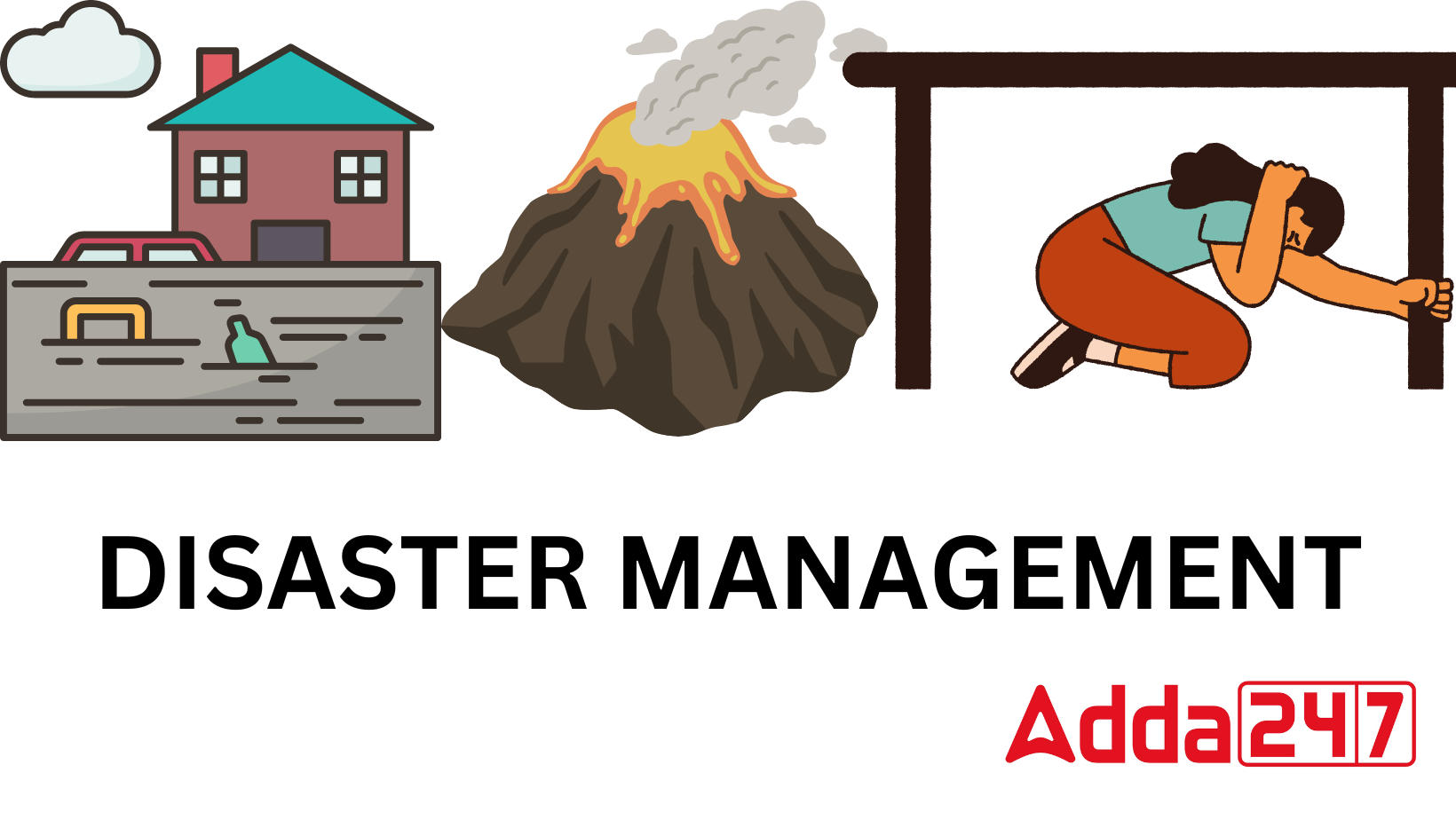
Table of Contents
Disaster management involves a systematic approach to preparing for, responding to, and recovering from natural or man-made disasters. It includes efforts to reduce the risk of disasters, minimize their impact, and ensure effective response and recovery mechanisms. This project explores the various phases of disaster management: preparedness, mitigation, response, and recovery. It emphasizes the importance of coordination between government agencies, communities, and non-governmental organizations (NGOs). By understanding the impact of disasters and implementing effective strategies, disaster management aims to protect lives, property, and the environment, while building resilience for future calamities. Check here Disaster Management Project all working Models and ways to implement in real life below.
Disaster Management Project
Disaster management in India is one of the most crucial points of discussion because of India’s highly diversified Climate. Indian Subcontinent is frequently evident of natural catastrophes such as Cyclones, earthquakes, floods, and droughts. Disaster management is the process of planning for and responding to natural disasters. It entails carefully organizing resources to mitigate the damage caused by calamities. It also entails a systematic strategy for handling catastrophe prevention, readiness, response, and recovery duties. n the article we will discuss it’s types, how to prepare Disaster Management Projects for Class 9 and 10 students along with new project ideas.
What is Disaster Management Project Class 9?
According to the United Nations, a disaster is a major disruption of a community or society’s ability to function that involves extensive affects on people, property, the economy, or the environment and beyond the capacity of the affected community or society to deal using its own resources.
Disaster management is the process by which we “prepare for, respond to and learn from the effects of big failures”. It is how we cope with the human, material, economic, or environmental impacts of a given disaster. Disasters can have human causes, despite the fact that nature frequently causes them. The International Federation of Red Cross and Red Crescent Societies defines a disaster as when a risk affects individuals who are already weak. Check disaster management project in details.
What is Disaster?
A disaster is a sudden, catastrophic event that causes significant disruption, damage, and destruction, affecting the lives, property, and environment of a community or region. Disasters can be natural or man-made, and they often require emergency response and recovery efforts to manage the aftermath and assist affected populations.
Disasters can take many different forms. Disasters, in whatever shape they take, disturb communities and can have major consequences for people, property, businesses, and the environment. They frequently test a community’s ability to cope. Human-caused disasters, such as industrial explosions or structural breakdowns, are the result of human error. Natural catastrophes are caused by physical occurrences such as earthquakes and droughts. Complex disasters might include epidemics or armed conflicts.
Types of Disaster
Types of Disasters are categorised into the following types-
- Floods, hail storms, cloudbursts, cyclones, heat waves, cold waves, droughts, and hurricanes are all examples of water-related disasters .
- Landslides, earthquakes, volcanic eruptions, and tornadoes are examples of geological disasters .
- Man-made disasters include urban and forest fires, oil spills, and the collapse of massive constructions.
- Biological disasters include viral outbreaks, pest invasions, livestock epidemics, and locust plagues.
- Chemical and industrial mishaps, mining shaft fires, and oil spills are examples of industrial disasters.
- Nuclear disasters include nuclear core meltdowns and radiation burn, sickness.
Disaster Management Cycle
Organizations and people use the disaster management cycle, which consists of a sequence of processes, to plan for, contain, and mitigate unforeseen disasters. These could include unforeseen property damage, natural disasters, or other occurrences that put other people’s lives in peril. After the initial crisis has passed, the disaster management cycle assists everyone in minimising the effects of unforeseen events and recovering as much resources as possible. A disaster management cycle aids persons affected by disasters by assisting in their reconstruction, regrouping, and recovery.

Disaster Management Act 2005
The Lok Sabha enacted the Disaster Management Act on November 28, 2005, and the Rajya Sabha did it on December 12, 2005. On January 9, 2006, the Indian President gave his approval. The Act mandates the creation of the National Disaster Management Authority (NDMA), whose chairman shall be the Prime Minister of India. At any given moment, the NDMA can only have nine members total, including the vice-chairperson. The NDMA members are appointed for a five-year term. On 27 September 2005, the NDMA was formally established in accordance with Section 3(1) of the Disaster Management Act after being first established on 30 May 2005 by executive order. The NDMA is in charge of “setting down the rules, plans, and procedures for disaster” as well as making sure that disaster responses are swift and efficient. It is tasked with establishing “guidelines to be followed by the State Authorities in drawing up the national Plans” in accordance with Section 6 of the Act. The Disaster Management Act of 2005 acknowledges Disaster Management as a crucial process of planning, organizing, coordinating, and implementing measures which are necessary for-
- Prevention of the threat of any disaster
- Reduction of risk of any disaster or its consequences
- Readiness to deal with any disaster
- Promptness in dealing with a disaster
- Assessing the severity of the effects of any disaster
- Rescue and relief
- Rehabilitation and Reconstruction
Project on Disaster Management Objectives
A disaster management project is a strategy created to aid a community or organisation in disaster prevention, response, and recovery. Natural or man-made, disasters can result in a variety of harm, including destruction of physical property, injuries, and fatalities.
A disasters management project’s objective is to lessen the effects of a disaster by:
- Identifying potential risks and hazards
- Creating plans to reduce the risks and hazards
- preparing people for disaster response
- putting in place a structure to manage relief operations
CUET 2024 Samarth 2.0 Arts Complete Batch
Disasters Management Project Types
- Hazard mitigation projects: These projects are designed to reduce the impact of a disaster by reducing the risk of a hazard occurring or by reducing the damage that a hazard can cause. For example, a hazard mitigation project might involve building a levee to protect a community from flooding or planting trees to help prevent erosion.
- Emergency response plans: These plans outline how a community or organization will respond to a disaster. They typically include information on how to evacuate people, how to provide food and water, and how to provide medical care.
- Recovery plans: These plans outline how a community or organization will recover from a disaster. They typically include information on how to rebuild infrastructure, how to provide financial assistance, and how to help people get back to their normal lives .
- Natural disasters management projects
- Man made disasters management projects
Natural Disasters Management Projects
The disasters which are caused by nature are termed natural disasters. For examples: earthquakes, floods, droughts, etc.
Manmade Disasters Management Projects
The disasters which are the results of human activities are known as man-made disasters. For examples: road accidents, and terrorist attacks.
Tips to Prepare a Project on Disaster Management
Here are some tips for developing a disasters management project Class 9.
- The first stage in creating a project on disaster management is identifying the potential risks and hazards that your community or organisation may encounter. You can achieve this by performing a hazard analysis.
- Identify potential hazards and risks, then create plans to reduce them. This is necessary after you have determined what potential risks and hazards exist. This could entail creating evacuation preparations, planting trees, or establishing levees.
- Teach people how to handle emergencies: It’s crucial to teach individuals how to handle emergencies. This can entail instructing individuals in evacuation procedures, first aid techniques, or how to assist the injured.
- Create a system for coordinating relief efforts: It’s critical to have a system in place for coordinating relief efforts in the case of a disaster. This can entail creating a command centre or a communication strategy.
Disaster Management Agencies in India
Some agencies are involved in disaster management that we study below in detail
National Disaster Management Authority (NDMA):- The National Disaster Management Authority, or the NDMA, is an apex body for disaster management, governed by the Prime Minister of India. It is charge of the supervision, direction, and control of the National Disaster Response Force (NDRF).
National Executive Committee (NEC):- The NEC is composed of high-profile ministerial members from the government of India that consist of the Union Home Secretary as Chairperson, and the Secretaries to the Government of India (GoI)like Ministries/Departments of Agriculture, Atomic Energy, Defence, Drinking Water Supply, Environment and Forests, etc. The NEC covers the National Plan for Disaster Management as per the National Policy on Disaster Management.
State Disaster Management Authority (SDMA):- The Chief Minister of the respective state is the head of the SDMA.The State Government has a State Executive Committee (SEC) which assists the State Disaster Management Authority (SDMA) on Disaster Management.
District Disaster Management Authority (DDMA):- The DDMA is headed by the District Collector, Deputy Commissioner or District Magistrate depending on the situation, with the elected representatives of the local authority as the Co-Chairperson. The DDMA ensures that the guidelines framed by the NDMA and the SDMA are followed by all the departments of the State Government at the District level and the local authorities in the District.
Local Authorities:- Local authorities would include Panchayati Raj Institutions (PRI), Municipalities, District and Cantonment 11 Institutional and Legal Arrangements Boards, and Town Planning Authorities which control and manage civic services.
Project File on Disaster Management Requirement
For a project file on disaster management, you can cover the following sections to create a comprehensive and informative document:
1. Title Page Title: “Disaster Management” Your name, class, school, and submission date. 2. Introduction Define disaster management and its importance. Mention the types of disasters (natural and man-made). Briefly explain why disaster management is essential for minimizing damage. 3. Types of Disasters Natural Disasters: Earthquakes, floods, hurricanes, tsunamis, landslides, volcanic eruptions, etc. Man-made Disasters: Industrial accidents, chemical spills, nuclear accidents, terrorist attacks, etc. Emerging Disasters: Climate change, pandemics, cyber threats. 4. Phases of Disaster Management Mitigation: Steps taken to reduce the impact of disasters (e.g., building stronger infrastructure). Preparedness: Emergency plans, drills, and training. Response: Immediate actions during and after a disaster (rescue, relief operations). Recovery: Rebuilding and rehabilitating affected communities and infrastructure. 5. Case Study: Recent Disasters Choose one or two recent disasters (like the 2015 Nepal earthquake, COVID-19 pandemic, or 2019 Australian bushfires). Discuss how the affected country managed the disaster and what lessons were learned. 6. Disaster Management in India Discuss India’s National Disaster Management Authority (NDMA). Key policies and frameworks like the National Disaster Management Plan (NDMP). Roles of organizations like NDRF (National Disaster Response Force). 7. Role of Technology in Disaster Management GIS (Geographical Information Systems) for disaster mapping. Early warning systems. Role of social media and mobile apps in disaster response. 8. Community Participation Importance of local community involvement. Role of NGOs, volunteers, and community-based organizations in disaster preparedness and recovery. 9. Disaster Management Plan Create a sample plan for a specific disaster (e.g., earthquake or flood) for a city or village. Include steps for evacuation, emergency contacts, and supply management. 10. Conclusion Summarize the importance of disaster management. Mention the need for proactive measures rather than reactive ones. 11. References List of books, websites, and articles you referred to for your project. You can also include diagrams (like disaster cycle phases, maps) and charts (for disaster statistics) to enhance your project.
Project Work on Disaster Management Plan
Creating a project on disaster management involves understanding various aspects of preparedness, response, recovery, and mitigation related to natural or man-made disasters. Here’s an outline for your project work on a disaster management plan: 1. Introduction Define Disaster Management. Importance of disaster preparedness and response. Overview of the disaster(s) you are focusing on (e.g., earthquake, flood, cyclone, fire, pandemic, etc.). Types of Disasters Natural Disasters: Earthquakes, floods, tsunamis, cyclones, hurricanes, droughts, landslides, etc. Man-Made Disasters: Industrial accidents, chemical spills, nuclear disasters, terrorism, etc. Phases of Disaster Management Mitigation: Efforts to reduce the severity or likelihood of a disaster (e.g., building earthquake-resistant structures). Preparedness: Planning and organizing for potential disasters (e.g., evacuation plans, drills, resource stocking). Response: Immediate actions taken during or after a disaster (e.g., search and rescue, first aid, food distribution). Recovery: Long-term efforts to restore normalcy (e.g., rebuilding, psychological counseling, and financial assistance). Disaster Management Plan Risk Assessment: Identifying potential risks and the vulnerabilities of the area/community. Preparedness Plan: Early Warning Systems: Using technology and communication systems to warn people about impending disasters. Evacuation Routes and Safe Zones: Identifying safe shelters and routes. Resource Management: Storing emergency kits, food, water, medicines, and tools. Training & Drills: Conducting regular disaster preparedness drills in schools, offices, and communities. Emergency Response: First responders’ roles: Medical teams, firefighters, police, NGOs, volunteers, etc. Coordination between local, state, and national disaster management authorities. Communication plans and protocols. Recovery Strategies: Housing and infrastructure rebuilding. Psychological support for victims. Restoring livelihoods and ensuring community resilience. Case Study (Optional) Analyze a recent disaster (e.g., the 2011 Japan earthquake and tsunami, Hurricane Katrina, COVID-19 pandemic). Discuss what went well and what could have been improved in disaster management efforts. Government and International Agencies Role of national agencies (e.g., NDMA – National Disaster Management Authority in India, FEMA in the USA). International organizations like the United Nations, Red Cross, and World Health Organization (WHO) in disaster response and recovery. Technology in Disaster Management Use of Geographic Information Systems (GIS), drones, satellite imagery, and AI for disaster prediction and damage assessment. Social media and mobile apps for disseminating information and coordinating response. Conclusion Importance of having a robust disaster management plan. How individuals and communities can contribute to disaster preparedness and mitigation. Bibliography/References Include all sources, books, websites, reports, and government documents referred to in the project.
Project on Disaster Management for Class 9 PDF
The Disaster management project pdf is given below so that candidates who want to use this pdf in their file can download it by clicking on below link.
Disaster Management Project PDF
Sharing is caring!
Que. What are the 4 types of disaster management project?
Emergency managers think of disasters as recurring events with four phases: Mitigation, Preparedness, Response, and Recovery.
When was Disaster Management in India?
On 23 Dec 2005, the Government of India enacted the Disaster Management Act.
What are the 2 main types of disasters?
Types of Disasters - Natural and Human-Caused Disasters.
What is the main aim of disaster management project?
The ultimate goal of the disaster-management project leader is to minimize the event's impact, something that involves preparedness, response, recovery and mitigation.

Trending Articles

- ISC Date Sheet 2024 Class 12
- ICSE Class 10 Date sheet 2025
- CLAT Admit card 2025
- CBSE Date Sheet 2024
- CBSE Sample Paper 2025
- NEET Syllabus 2025

CBSE Board Exam 2025
- CBSE Class 10 Sample Papers
- CBSE Class 12 Sample Papers
- CBSE Previous Year Papers
- CUET Syllabus
- CUET Previous Year paper
- CUET Participating College & Universities
- JEE Mains 2025
- JEE Main Syllabus 2025
- NEET State wise Cut off
- NEET Rank Predictor
- NEET OMR Sheet
- NEET College Predictor
Recent Posts
- JAC Board Exam Date 2025 Class 10, Check Jharkhand Board Date Sheet
- Co Prime Numbers Definition, How to Find Them, List, Properties, Examples
- CBSE Marking Scheme 2025 Class 10th, Check Latest Exam Pattern
- JKBOSE Class 10th Model Papers 2024-25, Download Subject Wise PDF
- Is 2025 Board Exam Easy or Hard for Class 10 Students
- Zero of a Polynomial for Class 9 and 10 Students, Learn Zero Polynomial with Examples
- Difference Between Arteries and Veins Structure in Tabular Form
- JKBOSE Class 10 Re-evaluation Result 2024 Out, Download Result PDF Here
- HBSE 10th Compartment Result 2024, Haryana Board 10th Class Compartment Result Date
- Karnataka SSLC Exam 3 Date 2024, Starting on August 2, Download Exam 3 Time Table PDF
- BSEB 10th Dummy Registration Card 2025 Out, Get Link at secondary.biharboardonline.com
- Maharashtra HSC SSC Supply Time Table 2024, Download 10th, 12th Routine PDF
- Difference Between Prokaryotic and Eukaryotic Cell for Class 9 & 11 with Examples
- HBSE Compartment Exam Admit Card 2024 Out, 10th, 12th Improvement Exam Hall Ticket Link
- Arunachal Pradesh Board 10th Result 2024, Release Date, Scorecard Link
- JKBOSE Class 10th Topper List 2024 Out, Check JKBOSE Class 10th Merit List PDF
- Consumer Awareness & Rights Project for Class 10th PDF Download
- GSEB SSC, HSC Supply Exam Timetable 2024 Out, Download 10, 12 Datesheet PDF
- RBSE 10th Result 2024 Out, Get Rajasthan Board Class 10 Result Link @rajeduboard.rajasthan.gov.in
- SSC Topper 2024- Check Maharashtra Board Topper List, Best Performing Districts
- Manipur HSLC Topper List 2024 Out, Check BOSEM Topper of 10th Class Name
- Odisha 10th Toppers List 2024 Out, Check BSE Odisha Topper Name, Marks
- TN SSLC Topper List 2024- Check 10th State First Mark Tamilnadu
- HPBOSE 10th Merit List 2024, HP Board 10th Topper Ridhima Sharma got 699
- पश्चिम बंगाल कक्षा 10 परिणाम 2024 घोषित, WB कक्षा 10 परिणाम डाउनलोड लिंक देखें
- MP Board District Wise Merit List 2024 Out, Meet Anushka Agarwal Class 10 Topper
- Madhyamik Life Science Question Paper 2024 with Answers
- UP Board Topper List 2024 Out, Meet Class 10th 12th Toppers, Know their marks
- Time Speed and Distance Formula Tricks with Problems
IMPORTANT EXAMS
Ncert solutions.
- NCERT Class 12
- NCERT Class 11
- NCERT Class 10
- NCERT Class 9
NCERT Books
School syllabus.
- CBSE Class 12
- CBSE Class 11
- CBSE Class 10
- CBSE Class 9
- JEE Mains 2025
Our Other Websites
- Teachers Adda
- Bankers Adda
- Current Affairs
- Adda Bengali
- Engineers Adda
- Adda Marathi
- Adda School

Get all your queries solved in one single place. We at Adda247 school strive each day to provide you the best material across the online education industry. We consider your struggle as our motivation to work each day.
Download Adda247 App
Follow us on
- Responsible Disclosure Program
- Cancellation & Refunds
- Terms & Conditions
- Privacy Policy

Disaster Management Project For Class 9th
Table of Contents
Acknowledgment:
I extend my heartfelt appreciation to all those who’ve been pivotal in supporting me throughout the completion of this comprehensive project on disaster management.
First and foremost, I express profound gratitude to my Social Science professor for providing me with the invaluable opportunity to delve into this critical field of study. Your guidance and mentorship have been instrumental in expanding my comprehension of disaster management.
My sincere thanks also go to my parents, whose unwavering support and encouragement have been a constant source of motivation throughout this journey. Your counsel and assistance have played a pivotal role in my success in this endeavor.
Furthermore, I’d like to extend my appreciation to the numerous experts and researchers who’ve dedicated their lives to the study of disasters, particularly earthquakes. It is through their relentless efforts and dedication that I was able to gather the extensive background knowledge that formed the foundation of this project.
Last but not least, I want to express my gratitude to all those individuals whose contributions, regardless of their magnitude, were essential to the success of this project. Your collective efforts have enriched the project and contributed to its overall effectiveness.
This project would not have been possible without the support, guidance, and collaboration of these individuals, and for that, I am profoundly grateful.
Introduction to Disaster Management:
Disaster management represents a comprehensive approach aimed at mitigating the impact of disasters on individuals, communities, and the environment. It encompasses a broad spectrum of activities and strategies focused on minimizing the effects of natural or human-made disasters and ensuring a coordinated response when these events occur.
Key Components of Disaster Management:
- Mitigation: Mitigation efforts concentrate on reducing the risk of disasters before they occur. This encompasses measures such as enforcing robust building codes to ensure structures can withstand earthquakes or floods, implementing prudent land-use planning to avoid construction in high-risk areas, and conducting public education campaigns to raise awareness about disaster preparedness.
- Preparedness: Preparedness involves meticulous planning and readiness for potential disasters. Communities and individuals develop emergency response plans, assemble emergency kits, and undergo training to understand how to respond when disaster strikes. Early warning systems are established to provide timely information and alerts.
- Response: Response is the immediate action taken during and after a disaster. It entails mobilizing first responders, including firefighters and medical teams, executing search and rescue operations, delivering emergency medical care, and ensuring the safety of affected individuals. Coordination among government agencies, non-governmental organizations, and the private sector is imperative during this phase.
- Recovery: After the immediate response phase, recovery efforts aim to restore normalcy and rebuild affected communities. This includes repairing infrastructure, providing psychological support to survivors, offering financial assistance to those affected, and addressing long-term health and environmental issues caused by the disaster.
The Significance of Disaster Management:
Disaster management holds immense importance for several reasons:
- Saving Lives: It is crucial for minimizing casualties during disasters. Early warning systems and well-practiced response plans can significantly reduce the loss of life.
- Reducing Damage: Effective mitigation measures can help prevent or reduce damage to infrastructure and property, ultimately saving billions of dollars in recovery costs.
- Community Resilience: Disaster management promotes community resilience by empowering individuals and communities to be prepared, self-reliant, and capable of responding effectively in times of crisis.
- Environmental Protection: Disaster management includes strategies for minimizing the environmental impact of disasters, such as oil spills or chemical accidents.
Types of Disasters:
Disasters can be broadly categorized into two main types: natural disasters and human-made disasters. These events can cause significant harm to people, property, and the environment. Understanding these different types of disasters is crucial for effective disaster management and preparedness.
Natural Disasters:
- Earthquakes: Earthquakes result from the sudden release of energy in the Earth’s crust, causing ground shaking and potentially leading to building collapses, landslides, and tsunamis in coastal regions.
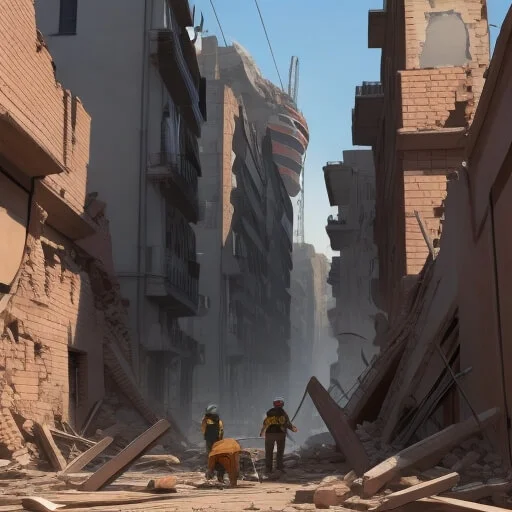
- Floods: Flooding occurs when water overflows onto normally dry land due to heavy rainfall, snowmelt, dam failures, or storm surges during hurricanes, causing extensive damage to homes, infrastructure, and agriculture.

- Hurricanes/Cyclones/Typhoons: These powerful tropical storms characterized by strong winds and heavy rainfall can cause widespread devastation, including wind damage, storm surges, and flooding.

- Tornadoes: Violent windstorms characterized by a twisting, funnel-shaped cloud can result in extreme destruction, including leveled homes and buildings.

- Wildfires: Uncontrolled fires that spread rapidly through vegetation, often in dry, hot conditions, can lead to the destruction of forests, homes, and communities.
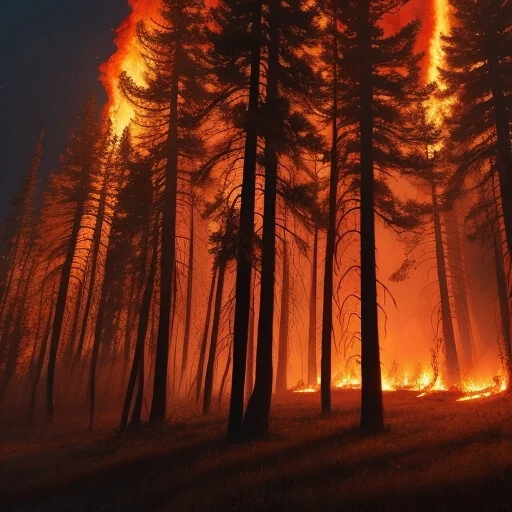
- Droughts: Prolonged periods of abnormally low precipitation causing water shortages with far-reaching effects on agriculture, water supplies, and ecosystems.
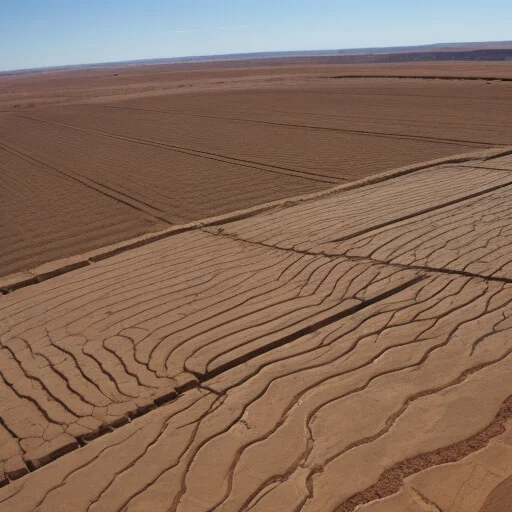
- Volcanic Eruptions: The release of molten rock, ash, and gases from volcanoes can lead to lava flows, ashfall, and even tsunamis in certain cases.
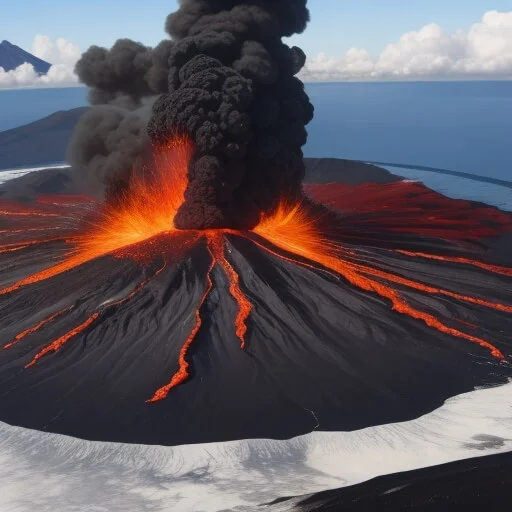
Human-Made Disasters:
- Industrial Accidents: These disasters result from accidents in industrial facilities, such as chemical spills, explosions, or nuclear incidents, causing environmental contamination and health hazards.
- Transportation Accidents: Including plane crashes, train derailments, shipwrecks, and vehicle accidents that often result in casualties and environmental damage.
- Terrorism: Deliberate attacks on civilian populations or infrastructure, creating fear and chaos through actions like bombings, chemical attacks, and cyberattacks.
- Oil Spills: Occur when large quantities of oil are released into the environment, often from tanker accidents or offshore drilling, with devastating effects on marine life and coastal ecosystems.
- Radiological Emergencies: Involve the release of radioactive materials from nuclear power plants, research facilities, or accidents, posing significant health risks requiring careful containment and cleanup.
- Cybersecurity Incidents: With increasing technology reliance, cybersecurity incidents, such as data breaches or cyberattacks on critical infrastructure, can disrupt essential services and compromise security.
Understanding Disaster Risk:
Comprehending disaster risk forms the bedrock of effective disaster management. It involves assessing and analyzing potential hazards and vulnerabilities to predict and mitigate the impact of disasters. A thorough understanding of disaster risk empowers individuals, communities, and governments to develop strategies that minimize harm and enhance resilience.
Key Aspects of Understanding Disaster Risk:
- Risk Assessment: Disaster risk assessment identifies and evaluates potential hazards a region or community may face, encompassing natural hazards like earthquakes, floods, and hurricanes, as well as human-made hazards like industrial accidents or terrorism.
- Vulnerability Analysis: Vulnerability analysis assesses the susceptibility of a population, infrastructure, and ecosystems to identified hazards, evaluating factors such as construction quality, healthcare systems, emergency response capabilities, and social factors that may increase vulnerability.
- Exposure Evaluation: Evaluating exposure entails determining what and who is at risk, including mapping hazard-prone areas, identifying critical infrastructure in harm’s way, and understanding the demographics of the affected population.
- Risk Communication: Effective communication of disaster risk to the public is essential, using clear language and accessible tools to convey potential threats and necessary actions. Public awareness campaigns and educational programs play a significant role in risk communication.
- Scenario Planning: Scenario planning involves creating hypothetical disaster scenarios based on identified risks, helping understand the potential consequences of various disaster scenarios and aiding in preparedness and response planning.
Benefits of Understanding Disaster Risk:
- Proactive Preparedness: In-depth knowledge of disaster risk enables communities and governments to proactively prepare for potential disasters, including developing emergency response plans, conducting drills, and stockpiling necessary resources.
- Resource Allocation: Understanding risk helps allocate resources more efficiently by identifying high-risk areas and vulnerable populations, directing resources where they are most needed.
- Resilience Building: Armed with knowledge of disaster risk, communities can implement resilience-building measures, including constructing more resilient infrastructure, improving healthcare facilities, and promoting sustainable land-use practices.
- Effective Response: When disaster strikes, understanding risk ensures a swift and effective response, enabling emergency responders to prioritize actions and allocate resources appropriately.
- Reducing Impact: Ultimately, the goal of understanding disaster risk is to reduce the impact of disasters, identifying and mitigating vulnerabilities to minimize casualties, damage, and long-term economic and environmental harm.
Disaster Preparedness:
Disaster preparedness represents a critical element of effective disaster management, encompassing a spectrum of activities, plans, and measures aimed at ensuring that individuals, communities, and governments are ready to respond to disasters when they occur. Preparedness is vital for minimizing the loss of life and property, as well as the overall impact of disasters.
Key Aspects of Disaster Preparedness:
- Emergency Response Plans: Preparedness begins with the development of emergency response plans that outline steps to be taken before, during, and after a disaster. These plans specify roles and responsibilities for various agencies and organizations involved in disaster response.
- Community Education: Public awareness and education campaigns are essential for preparedness, informing people about potential hazards, the importance of early warning systems, and the actions they should take during a disaster. This includes creating emergency kits, knowing evacuation routes, and having a family communication plan.
- Resource Stockpiling: Preparedness involves stockpiling essential resources such as food, water, medical supplies, and emergency equipment, critical for sustaining individuals and communities during the immediate aftermath of a disaster when access to outside help may be limited.
- Training and Drills: Regular training and drills help individuals and organizations practice their roles in disaster response, including first aid training, search and rescue exercises, and coordination drills among emergency responders.
- Early Warning Systems: Preparedness includes the establishment and maintenance of early warning systems that provide advance notice of potential disasters, allowing people to take protective actions. For example, tsunami warning systems can alert coastal communities of impending tsunamis.
- Infrastructure Resilience: Preparedness involves strengthening infrastructure to withstand disasters, including building codes ensuring structures are earthquake-resistant, flood defenses like levees and dams, and measures to protect critical infrastructure such as power plants and hospitals.
Benefits of Disaster Preparedness:
- Lives Saved: Effective preparedness measures can significantly reduce casualties by ensuring people know how to respond to disasters and have the necessary resources on hand.
- Reduced Damage: Preparedness measures such as building codes and infrastructure improvements can help reduce the physical damage caused by disasters, saving billions in recovery costs.
- Community Resilience: Communities that are well-prepared are more resilient and can recover more quickly after a disaster, reducing the long-term social and economic impacts of disasters.
- Efficient Response: Preparedness streamlines the response to disasters. When everyone knows their roles and responsibilities, and resources are readily available, response efforts are more efficient.
- Peace of Mind: Knowing that preparedness measures are in place can provide peace of mind to individuals and communities, reducing fear and anxiety during disasters.
Challenges in Disaster Management:
- Climate Change: Addressing the impacts of climate change, including more frequent and severe weather events, presents a critical challenge for disaster management.
- Population Growth and Urbanization: Rapid urbanization in many regions increases the vulnerability of densely populated areas to disasters, necessitating the inclusion of disaster resilience in urban planning.
- Technology Dependency: While technology can enhance disaster management, it also poses challenges, being vulnerable to cyberattacks or disruptions during disasters.
- Resource Limitations: Adequate resources, including funding, trained personnel, and equipment, are necessary for effective disaster management. Resource limitations can hinder response efforts.
- Complex Emergencies: Conflict and political instability can complicate disaster response efforts, especially in regions facing both natural and human-made disasters.
Solutions and Strategies:
- Climate Adaptation: Implementing climate adaptation strategies, such as resilient infrastructure and sustainable land-use planning, can help communities better withstand the impacts of climate change.
- Community Engagement: Empowering communities to be actively involved in disaster preparedness and response can improve resilience, utilizing local knowledge and participation.
- Data and Technology: Advances in data analytics, remote sensing, and artificial intelligence can enhance disaster risk assessment, early warning systems, and response coordination.
- Public-Private Partnerships: Collaborations between government agencies, non-profit organizations, and the private sector can provide additional resources and expertise for disaster management.
- Education and Training: Investing in education and training programs for emergency responders and the public is essential, ensuring individuals and organizations are well-prepared for disasters.
- International Cooperation: Disaster management often transcends national borders. Strengthening international cooperation and sharing best practices can improve response to cross-border disasters.
- Resilience Planning: Integrating resilience into urban planning and development is crucial, encompassing building codes, zoning regulations, and infrastructure design that consider disaster risk reduction.
- Innovation and Research: Encouraging innovation and research in disaster management can lead to new technologies and strategies that enhance preparedness and response efforts.
Certificate of Completion
I proudly certify that
has successfully completed the project on
“Disaster Management”
as part of my 9th-grade curriculum. This project has been a significant endeavor, covering various aspects of disaster management, including acknowledgment, understanding disaster risk, preparedness, and future challenges and solutions.
I want to express my gratitude to my teachers and mentors for their guidance and support throughout this project. Their wisdom and encouragement have been invaluable in helping me gain a deeper understanding of this critical field.
I also appreciate the unwavering support of my family, who have been there every step of the way, offering advice and encouragement when needed.
I embarked on this project with a thirst for knowledge, and I am proud of the effort and dedication I have invested in researching and presenting this material. This project reflects my commitment to learning and my passion for making our communities more resilient in the face of adversity.
Project Completion Date: [Date] [Your Full Name](Student’s Signature)
In order to download the PDF, You must follow on Youtube. Once done, Click on Submit
Subscribed? Click on Confirm
Download Disaster Management Project For Class 9th PDF
Related articles.

Automated Roti and Puri Maker Press project

The Oil Skimmer RC Boat

Secure Digi Locker Application Project

Software Piracy Protection Project
Leave a reply cancel reply.
Your email address will not be published. Required fields are marked *

Please Enable JavaScript in your Browser to Visit this Site.
- You don't have any recent items yet.
- You don't have any courses yet.
- Add Courses
- You don't have any books yet.
- You don't have any Studylists yet.
Disaster management project class 9
- Multiple Choice
Subject : Geography SL

- Discover more from: Geography SL IB (International Baccalaureate Diploma) 167 documents Go to course
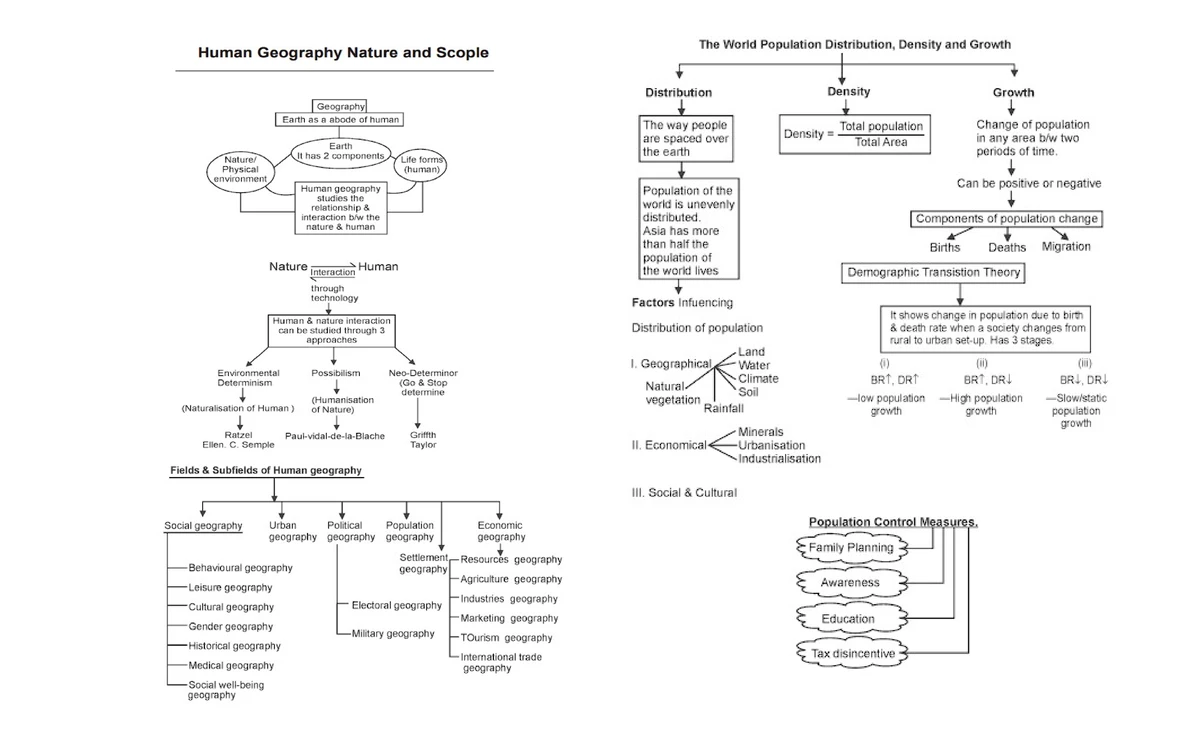
- More from: Geography SL IB (International Baccalaureate Diploma) 167 documents Go to course
Students also viewed
- 4. Climate HW CW MAP WORK AND Activity Cycle 7
- Nation Building Project
- 10th Project Wildlife Conservation Efforts in India PDF Habitat Destruction Wildlife
- Give Reason - geoography
- WP(C)1007 18(27 - Gbybybybbbyb
- Nigeria - nigga money
Related documents
- I am sharing '9, G3 Drainage Worksheet & Assignment' with you
- Vh11-cirno 2542 0 - detailed geography text
- Vh11-cirno 2543 0 - detailed geo text
- Vh11-cirno 2675 0 - detailed geo text
- Vh11-cirno 2519 0 - detailed geo text
- Waste Management - Grade 10- Geo

Project On Tsunami: 13 Pages You Must Include In Your Disaster Management Project
Written By Avinash Sharan
Class 9 | projects 9, 2 comment(s), 14th may 2021, project on tsunami class ix: complete guidance.
Have you got a Disaster Management Project On Tsunami this year? Are you ready for the challenge. Do you know which 13 Pages (topics) you must include in your class IX school project on Tsunami? Don’t worry. Just invest one day and 15 pages to complete your school project. You will get complete guidance here as per the CBSE norms. With every topic, do not forget to add or draw attractive images. If you wish to do a project on man made disaster, click on the link 11 Points To Include In Your Industrial Disaster Management Project
Also read other popular article on 12 Places To Visit Near Me – In Chhattisgarh
Sequence of all 13 Pages of Project on Tsunami
Page 1 Cover Page
2 – Content or Index
3 – Acknowledgement
4 -Introduction to tsunam
Page – 5 and 6 Causes of Tsunami
7 – Early warning signs of a Tsunami
8 Preparedness before Tsunami
9 Preparedness during Tsunami
10 Precautions to be taken after Tsunami
Page 11 After Effects of Tsunami
12 Tsunami in India – a brief history
13 – Certificate & Conclusion.
You may be interested in:
Five Things You Must Include In Your Project On Climate Change
Sustainable Development Project – Complete Guidance
Materials required:
File paper (one side ruled)
Sketch pen for writing the topic
Blue/black pen for writing the project.
Crayons/Pencil color for drawings.
News Paper clippings for relevant sources.
First Page – Cover page Of Project On Tsunami
The cover page of your project creates the first impression.
Therefore, do a lot of research work, surf the internet, get ideas, and then design a unique cover page.
See that your cover page reflects the topic.
At the top of the page write the name of your project in bold letters.
Do not forget to mention your Name, Class, and Sec, Roll No.
Use waste materials like broken bangles, ice-cream sticks, used match
sticks, wool, etc. to design the cover page.
Make an attractive border.
Avoid using plastic covers.

Second Page – Content or Index ( Project on Tsunami)
Content or the index page is to mention the topics along with the page numbers.
Use a sketch pen for drawing the lines.
You may also use a contrast color for writing the Topic.
if you are using red color for drawing lines, use Blue/Green color for writing the topic and Page No.
Write the topics in the content with Blue/Black ink which you are using to write the project.
Third Page – Acknowledgement (School Project on Tsunami)
Every project must include an acknowledgment.
On this page, you have to mention the name of your school, your Principal, and your subject teacher.
Keep it short and write in good handwriting.
ACKNOWLEDGEMENT (Example)
I would like to express my special thanks of gratitude to my Principal ___________________ and my Geography teacher _____________for giving me this golden opportunity to complete the Disaster Management Project on the topic TSUNAMI, which helped me a lot in enhancing my wisdom while doing the research and during the course of completion of this project.
This project would not have been completed without their enormous help, Guidance, and support.
I would also like to thank my parents, relatives and friends for providing me with all the facility that was required.
Whenever I was in need, they were always there behind me.
Although the project has been prepared with utmost care and deep routed interest, even then I accept respondents and imperfections.
Date: Name: XYZ
13/05/2021 Class & Sec IX – A
Fourth Page – Introduction to Tsunami
The word “tsunami” comprises of two Japanese words (” tsu ” meaning harbor and “nami” meaning wave)
It is a series of long waves commonly generated by under-the-sea earthquakes.
sudden and large displacement of the ocean water whose heights could be greater than 5 meters triggers Tsunami.
Large earthquakes below or near the ocean floor are the most common cause.
Apart from Landslides, volcanoes, and near-earth objects like asteroids, comets can also cause a Tsunami.
But as the waves travel inland, they build up to higher and higher heights.
The speed of tsunami waves depends on ocean depth, not on the source of the wave.
Tsunami waves often look like walls of water and can attack the shoreline.
It can be dangerous for long as the waves keep on coming every 5 minutes.
In the case of a Tsunami, the first wave may not be the largest.
as it progresses, the 2nd, 3rd, 4th, or even later waves that are the biggest.
Fifth & Sixth Page – Causes of Tsunami
Earthquakes.
As you know, It can be generated by movements along fault zones associated with plate boundaries.
All underwater earthquakes are neither harmful nor cause tsunamis.
There are four major conditions necessary for an earthquake to cause a tsunami. They are
i) An earthquake under the ocean.
ii) The intensity must be 6.5 or more on the Richter Scale.
iii) must occur at shallow depth up to 70 km.
iv) and most important, vertical movement of the seafloor.
(adsbygoogle = window.adsbygoogle || []).push({}); (adsbygoogle = window.adsbygoogle || []).push({}); (adsbygoogle = window.adsbygoogle || []).push({}); Landslides
- A landslide along the coast can force large amounts of water into the sea.
- It can disturb the water and generate a tsunami.
- Even underwater landslides or an earthquake can also result in tsunamis.
- material that becomes loose due to landslide moves at a greater speed violently, pushing and raising the water in front of it.
Volcanic Eruption
Violent volcanic eruptions represent also sudden and forceful disturbances.
In the ocean can therefore displace a great volume of water.
Due to this, can generate extremely destructive tsunami waves.
The volcano of Krakatoa, in Indonesia, was one of the largest and most destructive tsunamis ever recorded in 1883.
This explosion generated waves that reached 135 feet high.
It destroyed coastal towns and villages and killed more than 30,000 people.
Extraterrestrial Collision
By Extraterrestrial collisions we mean asteroids and meteors falling from space due to earth’s gravity.
But, these are an extremely rare occurrence.
Although to this date, there is no such record of such a tsunami.
If the size of an asteroid or meteor is , 5-6 km in diameter, it can displace a large volume of water to cause a tsunami.
Seventh Page – Early warning signs of a Tsunami ( Project on Tsunami)
- A large earthquake for more than 20 seconds.
- the recession (MOVING OF SEA WATER BACK).
- Seismologists are placed to monitor such events.
- As soon as possible, a tsunami warning is issued to media and municipalities in regions where a tsunami is likely to hit.
- Sudden change in the behavior of sea waves.
- When you get a warning of a tsunami, if there is time, move to higher ground immediately.
Eighth Page – Preparedness before Tsunami
- Check your house and place for any potential dangers related to flooding.
- Identify which places or locations are vulnerable
- Turn off the gas and electricity in your house for safety
- Keep and store all your documents at a higher and safe place.
- Ensure an emergency kit and evacuation plan.
- The kit must be portable (easy to carry)
- Keep the contact numbers of local emergency, ambulance, Police and fire department.
Ninth Page – Preparedness during Tsunami
- Do not go near the shore to watch a tsunami, it could be dangerous.
- If you cannot move to higher ground, stay inside your house in a group.
- wait and try to take the advantage of the gap between two tsunami waves.
- Listen for warnings carefully.
- After a tsunami, you may encounter a flood.
- Be alert. Do not panic and listen carefully to rescue officials.
Tenth Page – Precautions to be taken after Tsunami
These are general instructions that apply to many emergencies but not
every situation is the same.
i) Try to stay calm and do not panic.
ii) Check yourself and your near and dear ones for injuries. If possible give first aid.
iii) Avoid turning on electrical switches.
or flammable liquids spilled.
iv) Use mobile flashlights or a battery-operated torch.
v) check the building for structural damage.
If you find it unsafe, leave immediately.
vi) Get help if necessary.
vii) Listen to the local authorities.
viii) avoid using telephones. Leave the lines free for official use.
ix) Keep sufficient water and ready-made food.
x) Moreover, If you are in a high building, do not use the lift.
Eleventh Page – After Effects of Tsunami
Tsunamis continue to affect people even after the water has receded because
i) It can destroy the sewage system, and building structures.
ii) long-term health problems due to Decaying dead bodies of human and animals.
iii) financial losses and fear can further lead to psychological problems.
iv) Spread of infection, disease, and casualties.
v) will take time to reconstruct and the situation to get normalized.
vii) The worst will be heavy rush in hospitals, lack of doctors and other medical facilities.
Moreover, Transportation and communication will also come to a halt.
Twelfth Page Tsunami in India – a brief history
Day and Date of Tsunami: 26th December 2004
Time of Tsunami : 7:59 a.m.
Reason of Tsunami : underwater earthquake
Intensity of earthquake : 8.9 on the Richter scale.
Location of Tsunami : Indian Ocean near Indonesia.
Worst affected countries: Indonesia, Sri Lanka, India, Maldives, and Thailand
Total Number of Deaths : 225,000 people
Worst affected areas in India: Coastal regions of Tamil Nadu, Andhra Pradesh and Kerala.
Steps taken by Government after 2004 tsunami:
i) Firstly, National Oceanic and Atmospheric Administration has improved the ability to detect and forecast tsunamis.
ii) Secondly, expanding a network of tsunami-detecting ocean sensors.
iii) Thirdly, Improvement in forecasting and warning systems
iv) Finally, Creating awareness and educating people about tsunamis.
v) Moreover, trained rescue escorts and formation of NDMA was a good step.
Thirteenth Page – Certificate ( Project on Tsunami)
CERTIFICATE
A B C Public School
This is to certify that (mention your name) of Class IX -A has completed the Social Science Project of Disaster Management entitled
“TSUNAMI” himself and under my guidance.
The progress of the project has been continuously reported and has been in my knowledge consistently.
Teacher’s Signature.
Conclusion: ( Project on Tsunami)
Tsunami is a natural disaster.
It can be mitigated by healthy well maintained coral reefs, mangroves or boundary walls.
People living in the coastal areas must be educated and trained to face tsunamis.
However, efforts have been taken to reduce the loss of life by tsunami with investment in early warning systems.
For Disaster Management Project or a project on New Strain Of Coronavirus , click here.
For project on Industrial Disaster Management , click here.
If you are interested to know more about /2004-indian-ocean-tsunami, click on the link given.
For project on Sustainable Development Project – Complete Guidance Click on the given link.
Share this:
- Click to share on Twitter (Opens in new window)
- Click to share on Facebook (Opens in new window)
- Click to share on WhatsApp (Opens in new window)
- Click to share on LinkedIn (Opens in new window)
- Click to share on Telegram (Opens in new window)
Related Posts
Class ix geography chapter 1, “india – size and location,” mcq.
Oct 2, 2024
The revision quiz for Class IX Geography Chapter 1, "India - Size and Location," The revision quiz for Class IX...

“From Polls to Parliament: The Mechanics of Lok Sabha Elections in India”
Jun 20, 2024
How Are Lok Sabha Elections Conducted in India? As a student, you must be curious to know How Lok Sabha Elections are...

“From Waste to Wonder: The Power of Recycling in Carbon Footprint Reduction”
Jun 9, 2024
Carbon Footprint Reduction: A School Project On a Greener Planet Are you looking to make a positive impact on the...
Great work doneby this person helped me a lot in completing my portfolio
Thank you Hariom for your positive response.
Submit a Comment Cancel reply
Your email address will not be published. Required fields are marked *
Save my name, email, and website in this browser for the next time I comment.
Notify me of follow-up comments by email.
Notify me of new posts by email.
Submit Comment
Disaster Management - Class 9 PDF Download
Top courses for class 9, faqs on disaster management - class 9, disaster management - class 9, semester notes, objective type questions, important questions, sample paper, mock tests for examination, shortcuts and tricks, extra questions, practice quizzes, viva questions, video lectures, study material, previous year questions with solutions, past year papers.

Disaster Management - Class 9 Free PDF Download
Importance of disaster management - class 9, disaster management - class 9 notes, disaster management - class 9 class 9 questions, study disaster management - class 9 on the app, welcome back, create your account for free.

Forgot Password
Change country.
Disaster Management Project Class 9
By Shubham Semwal
Published on: August 14, 2022
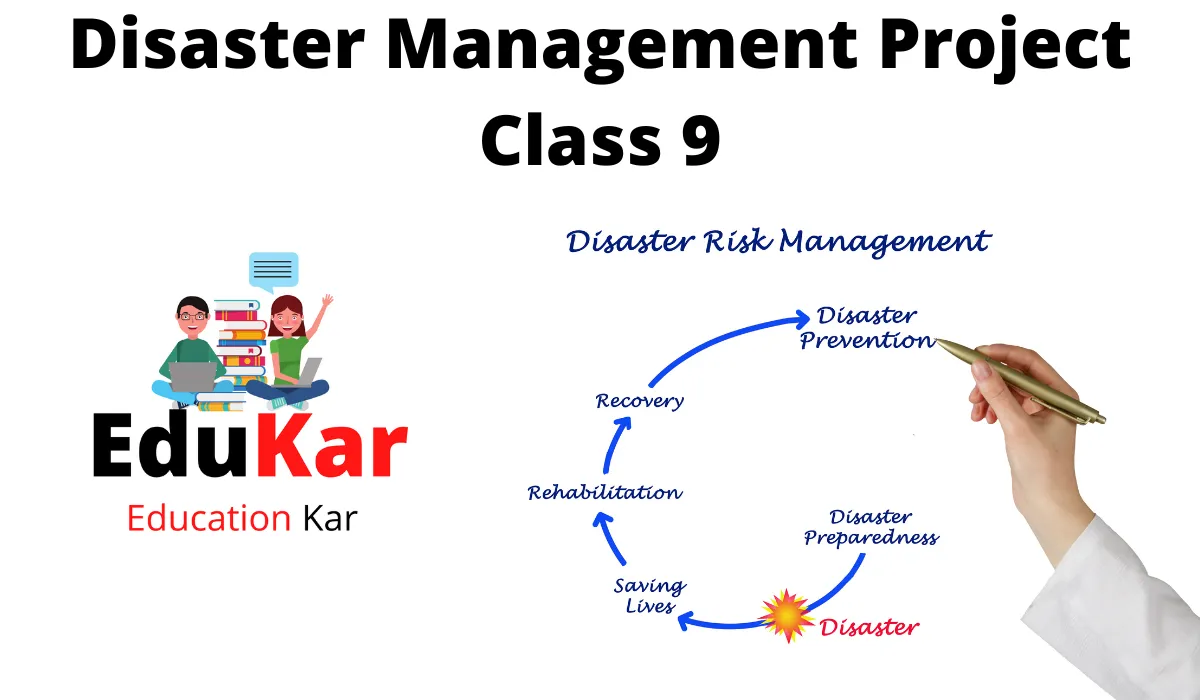
Throughout history, the world has seen numerous disasters. From climate change to war to natural disasters, these forces have been wreaking havoc on the world. A disaster is something that interrupts everyday life, and takes place without warning. Operating with a disaster management plan in place is the best way to prepare for disaster emergencies. In this blog, we will look into how you can create a disaster management Project for Class 9 plan that is successful.
What is disaster management?
Disaster management is the process of managing the effects of a disaster or unexpected event in order to minimize its impact. It is often the response to natural disasters such as floods, earthquakes, or volcanic eruptions, but it also includes man-made disasters such as terrorist attacks, industrial accidents or nuclear accidents.

Why do we learn disaster management?
There are many reasons that people learn disaster management. Some people learn disaster management because they plan on a career in the field, and others do so because they want to know how to react in the event that a disaster does strike. Some people know that they need to learn disaster management to be prepared for a disaster, and want to be an asset to their family in the event that their plans change.
When a disaster strikes, you will need to know how to help these people. For example , you will need to be able to communicate with them, provide them with food, water and shelter and keep them safe. You will also need to know how to prepare for a natural disaster and save yourself and your family in case of an emergency.
What are the most common disaster management scenarios?
Disasters come in a variety of shapes and sizes. Generally, they are defined as being either a natural or man-made event that results in the loss of human life.
There are many classifications of disaster, but the most common disaster management scenarios tend to be natural disasters, such as earthquakes, floods, tornadoes, hurricanes, and tsunamis.
Man-made disasters are usually classified as accidents, such as nuclear accidents, chemical accidents, and terrorist attacks.
What are the steps of disaster management?
There are a number of steps that are followed during a disaster management process. The first step is to make sure that you have a disaster management plan in place before you need it.
- The first step should be to identify the areas where you are vulnerable to a disaster and develop strategies to protect yourself.
- The second step is to train your staff so that they are ready for a disaster.
- The third step is to ensure that you have an emergency plan in place.
- The fourth step is to make sure that you have a clear communication system in place.
- The fifth step is to have an action plan in place. Finally, the sixth step is to make sure that you have a backup plan in place.
What are the different types of disasters?
There are different types of disasters that can impact your life. They are natural disasters, such as floods, earthquakes, landslides, tornadoes, and lightning.
There are also man-made disasters, such as fires, riots, and hurricanes.
There are also disasters that are both natural and man-made, such as wildfires and volcanic eruptions. A disaster can occur anywhere on Earth, and it can happen at any time.
What are the different levels of disaster management?
Disaster management is the practice of trying to prevent or reduce damage, injury, or death resulting from natural or man-made disasters. There are different levels of levels of disaster management. The 4 levels of disaster management are mitigation , preparedness , response , and recovery .
Mitigation is the process of reducing the impact of a disaster by taking preventative measures.
Preparedness is the process of being proactive, taking steps to reduce the impact of a disaster by taking preventative measures.
Response is the process of taking immediate measures to reduce the impact of a disaster.
Recovery is the process of repairing and rebuilding after a disaster.
What are some of the benefits of disaster management?
There are many benefits of disaster management. A disaster management plan can help to ensure that the community is ready for a disaster. It also helps to ensure that your community is safe and secure. It also helps to provide an overall sense of security to your community. The main benefits of disaster management are that it helps to prepare for a disaster and it helps to reduce the damages that a disaster might cause.
What are the risks of disaster management?
When it comes to disaster management, there are a number of risks that come with the job. Some of these risks are physical, while others are more emotional. Some risk factors for disaster management include psychological trauma, high stress, and the risk of high-level disasters.
In many cases, disaster management can be a high-risk profession. Despite the risks, disaster management is a profession that is on the rise. In many ways, disaster management is similar to crime scene investigation. There is always a risk when it comes to working in this industry, but the rewards are well worth the risk.
What are some steps you can take to be prepared?
Preparation can take many forms, from the simple and often forgettable, such as installing smoke alarms in your home, to the more advanced and expensive, such as constructing a flood-safe building or buying an emergency generator. In general, disaster management is the planning and preparation for dealing with the consequences of natural or man-made disasters. Preparation can take many forms, from the simple and often forgettable, such as installing smoke alarms in your home, to the more advanced and expensive, such as constructing a flood-safe building or buying an emergency generator.
What are some skills you should learn to prepare for a disaster?
ealing with an emergency can be stressful. But it doesn’t have to be like that. You can learn these skills now and prepare for the worst that could happen. A lot of people find that they are more capable and confident when they know how to deal with a disaster. Here are some skills you should learn to prepare for a disaster: • Shelter Building: Know how to make your own shelter. Make sure that you know how to use a tarp, tent and a sleeping bag.
• Fire-Building : Know how to control on fire. You should also know how to use fire extinguisher and all other equipment.
• Medicinal Herbs: Know how to make your own herbal remedies. You should know how to identify plants and use them as a source of medicine.
• Wilderness Survival: Know how to build shelter, build a fire, and make a good meal.
• Emergency Preparedness: You should have a basic knowledge of emergency situations to face them.
What are some of the disasters that have recently happened?
In India, one of the most common natural disasters is floods. In the past few years, there have been many floods in India, the most recent being the floods in the state of Tamil Nadu. There are many other natural disasters that have happened in India, including cyclones, earthquakes, tsunamis, and severe storms. The following are some of the disasters that have recently happened in India:
- Assam Earthquake on April 28, 2021.
- Cyclone Gulab: Cyclone Gulab was a storm that impacted eastern India on September 24, 2021, in the Bay of Bengal.
- Maharashtra Floods.
- Tamil Nadu Floods.
Leave a Comment Cancel reply
Save my name, email, and website in this browser for the next time I comment.

Latest Post

Advantages and Disadvantages of CLAT Coaching

HP High Court Recruitment 2023-40 Posts Stenographer, Driver, Translator | Vacancy, Eligibility, Salary, Apply Online

RPSC Recruitment 2023-Librarian, PTI, Asst Professor 533 Posts | Vacancy, Eligibility, Salary, Apply Online

PSSSB Recruitment JE Civil-127 Posts | Vacancy, Eligibility, Salary, Apply Online [2023]

AIIMS,Raebareli Sr Resident 2023-165 Posts | Vacancy, Eligibility, Salary, Apply Online

Sed urna neque, porttitor ac libero id, mollis molestie libero. Suspendisse imperdiet turpis et euismod placerat. Suspendisse potenti. Morbi quam felis, convallis vel nisi at, lobortis tristique.
Credit Card
Stock Market
Cryptocurrency
Quakes Links
Privacy policy
Phone: +91 9090909099
Email: [email protected]
© Example.com • All rights reserved

Disaster Management Project for Class 9

Table of Contents
Disaster Management Project Class 9 : Disaster Management refers to a comprehensive framework encompassing planning, coordination, and execution of strategies aimed at mitigating risks during disasters and effectively addressing their aftermath. It involves proactive measures to minimize the impact of both natural and man-made calamities through preparedness, response, and recovery efforts. Central to disaster management is the assurance of timely rescue and relief operations to safeguard lives and alleviate suffering.
Fill Out the Form for Expert Academic Guidance!
Please indicate your interest Live Classes Books Test Series Self Learning
Verify OTP Code (required)
I agree to the terms and conditions and privacy policy .
Fill complete details
Target Exam ---
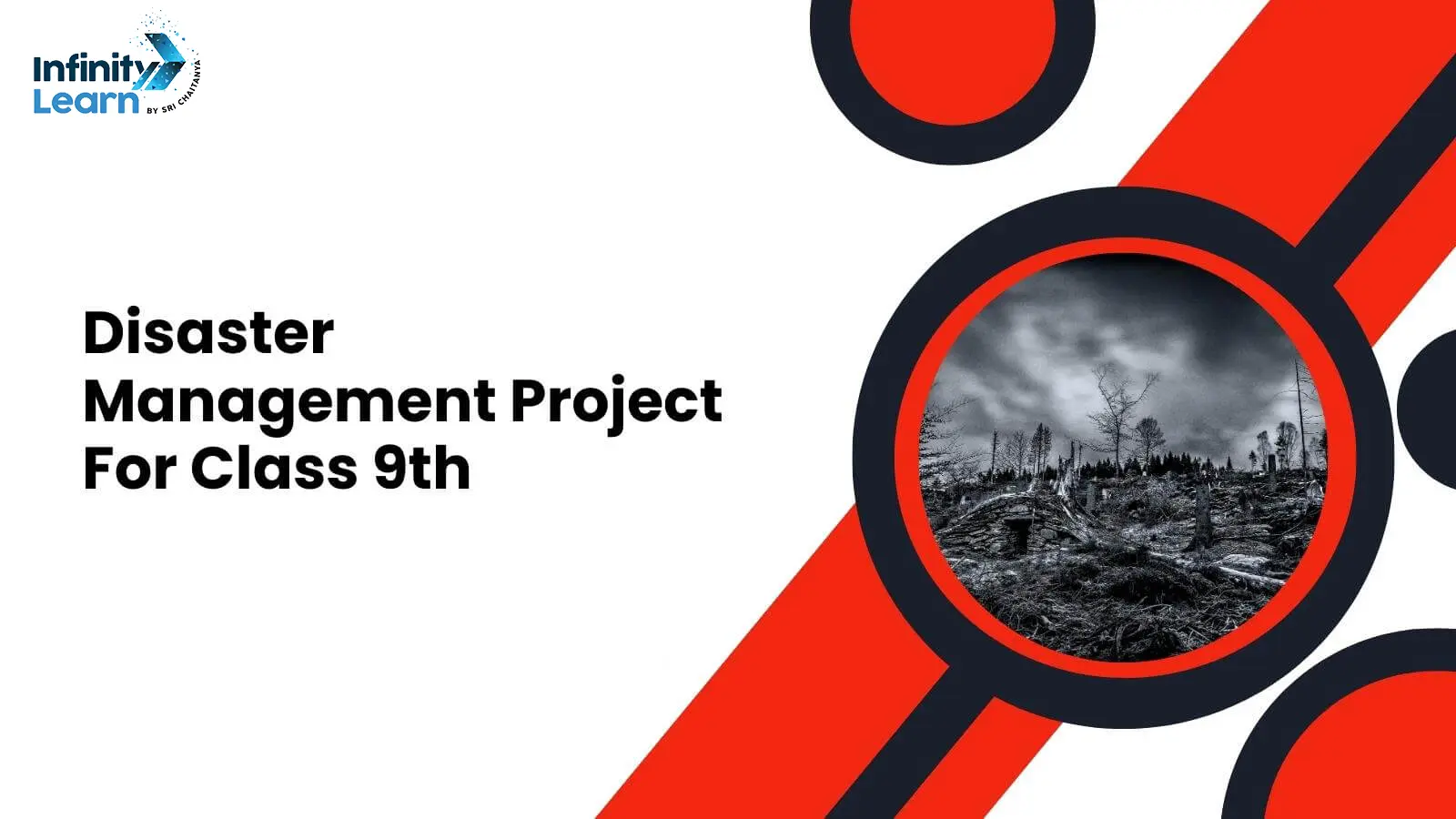
What is Disaster Management and Disaster Management Project Class 9?

Disaster Management, especially important for Class 9 projects, is all about getting ready for and dealing with big problems that happen suddenly. These problems can be because of nature, like floods or earthquakes, or because of people, like accidents or fights. In Disaster Management, we learn how to plan ahead for these problems, organize what to do when they happen, and help everyone who’s affected. It’s like having a plan for when things go wrong, so we can keep ourselves and our communities safe. So, in a disaster management project class 9, students will learn how to prepare for disasters, what to do during them, and how to help afterwards.
The International Federation of Red Cross and Red Crescent Societies says a disaster happens when something risky affects people who are already vulnerable. So, disaster management is about helping those who need it the most during tough times.
Survival Skills Disaster Management CBSE Class 10 Extra Questions
Disaster Management Project PDF Class 9
A Disaster Management Project for Class 9 PDF likely entails educational material or a practical project aimed at teaching ninth-grade students about disaster management. Topics may cover understanding different types of disasters, creating emergency plans, and learning about mitigation strategies. The PDF may include information on how to respond to disasters, stay safe during emergencies, and help others in need. It could also provide guidelines for conducting research, creating presentations, or participating in simulations related to disaster management.

Implementing a Project on Disaster Management

To engage students in hands-on learning, schools can incorporate a project-based approach to natural disaster management. Here’s a structured framework for disaster management project class 9:
- Selecting a Natural Disaster: Choose a specific type of natural disaster as the focus of the project on disaster management (e.g., earthquake, flood, wildfire). Encourage students to research its characteristics, historical occurrences, and potential impacts on their region.
- Risk Assessment: Guide students in conducting a risk assessment for the chosen natural disaster. Using maps, data, and case studies, help them identify vulnerable areas, populations, and infrastructure at risk.
- Preparedness Planning: Assist students in developing a comprehensive disaster preparedness plan tailored to the selected natural disaster. This plan should include preventive measures, evacuation procedures, emergency communication channels, and resource allocation strategies.
- Community Outreach: Encourage students to raise awareness about natural disaster preparedness within their school and community. This could involve organizing workshops, creating informational materials, or inviting guest speakers from relevant organizations.
- Simulation Exercise: Conduct a mock disaster drill to allow students to simulate emergency response scenarios based on their preparedness plans. This practical exercise will help them understand the challenges and dynamics of real-life situations.
- Reflection and Improvement: Facilitate a debriefing session after the simulation exercise, where students can reflect on their experiences and identify areas for improvement in their preparedness plans. Encourage them to brainstorm innovative solutions and strategies for future readiness.
CBSE Class 9 Social Science Syllabus

How to Create Project File on Disaster Management for Class 9
Creating a class 9 project on disaster management is a great way to learn about different types of disasters and how we can prepare for them. Here’s a simple guide to help you make an impressive project file.
- Choose a Type of Disaster: Start by picking one type of disaster to focus on, like earthquakes, floods, cyclones, or wildfires. This will make it easier to research and stay focused.
- Write an Introduction: Begin your file with a brief introduction about disaster management. Explain what it is and why it’s important.
- Explain Causes and Effects: Write about the causes of the chosen disaster. For example, what causes floods or earthquakes? Then, mention the effects, like damage to buildings or impact on people.
- List Safety Measures: This is important! List some ways to stay safe before, during, and after the disaster. You can include tips like emergency kits, safe evacuation, or how to help others.
- Use Diagrams and Pictures: Add some simple diagrams or pictures to make your project more interesting. For example, you could draw a map of disaster-prone areas or show a basic emergency kit.
- Include Real-Life Examples: Add a few examples of recent disasters, like a major flood or earthquake that happened recently. This makes your project more relevant and realistic.
- Add a Conclusion: Summarize what you learned and why disaster management is essential. Write a few sentences about how everyone should be prepared.
- Neat Presentation: Make sure your project is neat and well-organized. Use headings, underline key points, and check your spelling.
This structure will help you create a complete and informative project file on disaster management. Good luck!
Types of Disaster Management Project for Class 9
- Hazard Mitigation Projects: These projects aim to reduce disaster impact by lowering risk or lessening damage. Examples: levees prevent flooding, erosion control controls damage.
- Emergency Response Plans: These plans outline how communities or organizations will respond to disasters, including evacuation procedures, provision of essential supplies, and medical care.
- Recovery Plans: These plans detail the steps for post-disaster recovery, including rebuilding infrastructure, providing financial aid, and assisting affected individuals in returning to normalcy.

Natural Disasters Management Project for Class 9
Natural disasters pose significant threats to life and property. Disaster Management Projects for Class 9 aim to mitigate their impact effectively. Examples include earthquakes, cyclones, floods, and volcanic eruptions.
- Earthquakes: Rapid and intense ground shaking caused by the movement of the earth’s crust, often resulting in widespread destruction and secondary disasters such as tsunamis.
- Cyclones: Intense spinning storms originating over oceans in tropical regions, bringing forth destructive winds and heavy rainfall.
- Floods: Occur when an excess of water inundates land, disrupting daily activities and causing damage. Floods can result from various factors, including heavy rainfall, storm surges, or seismic events.
- Volcanic Disasters: Triggered by volcanic activities, including lava flows, mudflows, and pyroclastic flows, which can cause extensive damage and pose significant risks to human life.
Man-made Disasters Management Project for Class 9
Man-made disasters present unique challenges in disaster management. Disaster Management Projects for Class 9 address issues such as road accidents, building collapses, and terrorist attacks.
- Road Accidents: Often caused by careless driving, inexperienced drivers, and inadequate road maintenance, leading to significant injury and loss of life.
- Building Collapses: Result from substandard construction practices and lax enforcement of safety regulations, particularly prevalent in regions with rapid urbanization.
- Terrorist Attacks: Deliberate acts of violence targeting civilians, infrastructure, or institutions, posing grave threats to public safety and security.
Enroll Now to Online Course for NEET Class 9 Preparation
Tips for Developing Disaster Management Project for Class 9
- Risk Identification: Conduct a thorough hazard analysis to identify potential risks and hazards within your community or organization.
- Risk Mitigation: Develop plans to reduce identified risks, which may include evacuation protocols, infrastructure improvements, or community preparedness initiatives.
- Emergency Preparedness: Educate individuals on emergency response procedures, including evacuation drills, first aid training, and disaster preparedness kits.
- Relief Coordination: Establish a robust system for coordinating relief efforts, including the setup of command centers and effective communication channels.
Disaster Management Projects for Class 9 are vital for protecting communities and organizations from disasters’ harmful impacts. By understanding the nuances of disaster management and implementing proactive measures, students can contribute to building resilient and disaster-ready societies. Together, we can navigate through the challenges posed by disasters and emerge stronger than before.
Enroll Now to Online CBSE Foundation Courses for Class 9
Also Refer:
- Paragraph on Disaster Management
- Speech on Disaster Management
- Essay on Disaster Management
FAQs on Disaster Management Project Class 9
What is disaster management class 9 for projects.
Disaster management for Class 9 projects typically involves studying various aspects of disaster preparedness, response, and mitigation. Students may explore different types of disasters, their causes, effects, and methods to minimize their impact on communities.
How to make a project file class 9?
To make a project file for Class 9, students can follow these steps: Choose a topic related to the curriculum, such as disaster management. Research the chosen topic thoroughly, gathering information from textbooks, reliable websites, and other sources. Organize the collected information into sections, including an introduction, objectives, methodology, findings, conclusion, and bibliography. Use clear and concise language, along with appropriate diagrams, charts, and illustrations to enhance understanding. Proofread the project file for any errors in grammar, spelling, or formatting before submission.
Which topic is best for disaster management?
The best topic for disaster management depends on various factors, including the interests of the student, the availability of resources, and the relevance to the local context. Some popular topics include natural disasters like earthquakes, floods, hurricanes, or human-made disasters such as industrial accidents or pandemics.
परियोजनाओं के लिए आपदा प्रबंधन कक्षा 9 क्या है?
कक्षा 9 के परियोजनाओं के लिए आपदा प्रबंधन का मुख्य उद्देश्य विभिन्न प्रकार की आपदाओं का अध्ययन करना, उनके कारणों, प्रभावों, और समुदायों पर उनका प्रभाव कम करने के तरीकों का अध्ययन करना होता है।
Related content

Get access to free Mock Test and Master Class
Register to Get Free Mock Test and Study Material
Offer Ends in 5:00
Select your Course
Please select class.

- History Most Important Questions
- Geography Most Important Questions
- Polity Most Important Questions
- Economics Most Important Questions
- English Grammar
- Parts of Speech
- Figure of Speech
- English Tense Chart
- Mathematics
Disaster Management, Types, Cycle [ Projects for Class 9, 10 ]
Disaster Management: Disaster Management is an incorporated course of planning, sorting out, organizing, and carrying out measures that are essential for risk reduction during disasters and to face the consequences well prepared. Disaster management ensures rescue and relief.
And A disaster is characterized as a disturbance of enormous scope, either regular or man-made, happening in short or extensive stretches. Disasters can prompt human, material, monetary or ecological difficulties, which can be much higher than the tolerable limit of the impacted society.
Table of Content
What is disaster management, disaster management agencies, types of disasters, disaster management cycle, disaster management project, disasters management projects for class 9 and 10, disaster management – faqs.
According to the Disaster Management Act(2005), Disaster Management is Defined as a combined process of planning, organizing, coordinating, and implementing standards that are necessary for the following:
- Prevention of the threat of any kind of disaster
- Reduction in risk of any kind disaster
- Prepare to deal with any disaster
- Prompt for dealing with a disaster or its any consequences
- Estimating the harshness of the effects due to any disaster
- Rescue and relief
- Rehabilitation and Reconstruction
National Disaster Management Authority (NDMA): The National Disaster Management Authority (NDMA), is an important part for the disaster management in India, Which is responsible for the management, direction, and management of the National Disaster Response Force (NDRF) of India. This Authority is Headed by the Prime Minister of India.
National Executive Committee (NEC): The National Executive Committee is comprised of high-profile members from the government which include the Union Home Secretary (Chairperson), and the Secretaries of Ministries of Agriculture, Atomic Energy, Defence, Drinking Water Supply, Environment, Forests, etc. This Organization prepares the National Plan for Disaster Management according to the National Policy of India on Disaster Management.
State Disaster Management Authority (SDMA): The Chief Minister is the head of the Agencies. The State Gov. has a State Executive Committee (SEC) which assists the SDMA on Disaster Management.
District Disaster Management Authority (DDMA): It is headed by the District Collector, Deputy Commissioner / District Magistrate depending on the Disaster situation, with the elected representatives of the local administration as the Co-Chairperson. This Agencies ensures that the guidelines framed by the NDMA and the SDMA must followed by all administration at the District level.
Local Authorities:- Local authorities includes Panchayati Raj Institutions (PRI), Municipalities, District as well as Cantonment 11 Institutional and Legal Arrangements Boards, and Town Planning Authorities which is responsible for controlling and managing of services.
Need for disaster management
As per experiences, taking India into account, India is frail against 30 exceptional types of disasters that will impact the monetary, social, and human improvement potential such a lot that it will definitively influence the effectiveness and huge scope of financial execution. This widespread chaos and obliteration lead to the requirement for Disaster Management.
Disasters are classified into two types, namely:
- Natural disasters
- Man-made disasters
Natural Disasters
Natural disasters are physical peculiarities caused either by quick or slow beginning occasions that promptly affect human wellbeing and auxiliary effects bringing on additional demise and languishing. Natural disasters are further classified into 5 types.
- Geophysical natural disasters: Naturally occurring disasters like a volcanic eruption, tsunamis, earthquakes, and landslides are some of the major forms of geophysical natural disasters.
- Hydrological natural disasters: Naturally occurring disasters like avalanches and floods are the major forms of hydrological natural disasters.
- Climatological natural disasters: Naturally occurring disasters like extreme temperatures, forest fires, and global warming are some of the major forms of climatological disasters.
- Meteorological natural disasters: Naturally occurring disasters like cyclones and storms are the major forms of meteorological disasters.
- Biological natural disasters: Naturally occurring disasters like disease epidemics and plagues are the major forms of biological disasters.
Manmade Disasters
Manmade Disasters are the events that are brought about by human beings which happen in or near human settlements frequently caused as a consequence of Environmental or Technological Emergencies. Manmade disasters are further classified into three types.
- Gas leakages: Gas spills are quite possibly the riskiest man-made disaster on the planet. They can straightforwardly carry unfortunate results to human well-being and the climate. Gas breaks can likewise spread rapidly without notice. It might cause a huge blast and claim human lives.
- Oil spillages: Oil spills adversely affect marine creatures. Since the majority of the oil floats in water, the daylight engrossing limit of the water diminishes. Oil spills are serious natural contamination. A ton of poisons are flushed into the air and soil.
- Nuclear explosions: Nuclear explosions cause serious damage to the atmosphere and soil and also have a long-lasting impact on the health of the inhabitants.
Disaster management cycle includes four Stage Process: prevention, preparedness, response, and recovery. Managing and Controling disasters effectively requires paying careful attention to each stage process.
Here is the four States of Disaster Management Cycle:
1. Prevention
In Disaster Management, Prevention means identifying potential risks and developing safeguards to mitigate their impact. Although The first stage in the process involves placing permanent standards into the place that can help minimize disaster risk.
2. Preparedness
In Disaster Management, Preparedness is an ongoing process in which people, communities, businesses and organizations plan and train for what they’ll do in the situation of a disaster.
3. Response
In Disaster Management, Response is what happens after the disaster occurs. This Process involves both short- and long-term responses in the situation of Disaster.
4. Recovery
In Disaster Management, Recovery is the fourth Process in Disaster management cycle and It is the recovery for all aspects of the disaster’s impact.
A disaster management project is a strategy to create a community or organisation in disaster prevention, response, and recovery. Natural or human-made, disasters can be resulted in a variety of damage, including destruction of physical properties, injuries, and fatalities.
A disaster management project’s purpose is to control the negative effect as well they can:
- Identifying potential risks and threats
- Creating a plans to reduce the risks and potential negative threats
- preparing people for quick disaster response
- Placing it in a place a structure to manage relief operations.
The Disasters Management Projects Ideas for Class 9 and Class 10 are the following:
Natural Disasters Management Projects
1. Earthquake: An earthquake is a quick, harsh shaking of the ground that results from the movement of the earth’s crust. It causes significant destruction for humanity. It’s may also cause for a tsunami or even volcanic eruption to result from an earthquake.
2. Cyclone: Cyclones are like intense spinning storm that develops over the ocean near the tropics (or, more accurately, tropical storms).
Human-made Disasters Management Projects
1. Building collapses: Building collapses are very common in India where construction is often impatiently done, with very low gard of safety regulations.
2. Terrorist attacks: Devastating acts like terrorist attacks on the World Trade Centre etc causes very terrible effect on humanity. Terrorism may involve devastating acts using weapons of mass destruction ranging from chemical agents, natural risks, a radiological or nuclear machine, and other explosives.
Recommended Articles: Disaster Management in India , Crisis Management
1. What are the 5 ways to do during earthquake?
Here are the 5 things you can do during Earth Quakes: Stay inside where you are. Drop under heavy furniture such as a table, desk, bed or any solid furniture. Cover your head to prevent being hit by falling objects. Hold onto the object that you are under. Keep clear of windows—glass may shatter from the shaking.
2. Explain in detail biological disasters?
The obliterating impacts brought about by a colossal spread of a particular sort of living organism that might spread infection, viruses, or an invasion of plant, creature, or bug on a pestilence or pandemic level. The recent COVID 19 pandemic is an example of a biological natural disaster.
3. How can we avoid manmade disasters?
Constructing risky industries and factories away from cities and towns. Reduce, Reuse, Recycle! Use oil skimmer boats immediately to clean oil spills. Vacate people immediately from affected areas and shift to a safe place and ensure doctor consultation.
4. What is disaster management class 9 project?
A disaster management project is a strategy to help community or organisation in disaster prevention, response, and recovery. It is Created by the Social communities, Government Organization and Trust Agencies.
5. What are the Disaster Management project ideas?
Best Disaster Management Project ideas for college students ( Class 9, 10, 11) Rescue. Relocation. Provision Food and Water. Provision Emergency Health Care. Prevention of Disease and Disability. Repairing Vital Services e.g. Telecommunications, Transport. Provision Temporary Shelter.
Similar Reads
- Disaster Management, Types, Cycle [ Projects for Class 9, 10 ] Disaster Management: Disaster Management is an incorporated course of planning, sorting out, organizing, and carrying out measures that are essential for risk reduction during disasters and to face the consequences well prepared. Disaster management ensures rescue and relief. And A disaster is chara 7 min read
- What is adaptive life cycle in project management? Adaptive Life cycle in project management stands for a flexible method of managing projects in unpredictably changing situations. The adaptive lifecycle, in contrast to traditional linear procedures, places an excessive cost on adaptability, iterative development, and teamwork, permitting groups to 7 min read
- 12 Project Management Challenges and How To Solve Them? Project Management is a multifaceted discipline that involves a range of tasks that must be completed adequately without hitting a wall to ensure the project is done well. The projects go from planning to execution; the obstacles are the reasons that they may lose track of the goal they are trying t 7 min read
- What are the Major Types of Project Management? Leading a team demands unique skills and experience. Project management, with its diverse approaches, requires understanding. Navigating individual work styles, honing leadership skills, and achieving goals necessitate a nuanced grasp of the varied aspects of this challenging role. The following poi 12 min read
- Common Types of Risk in Project Management When it comes to managing a project, risks are unavoidable, but handling them well is the key to success. This article presents different types of risks that can occur throughout the life cycle of a project, including scope creep and security threats. It also advises on how to spot potential problem 7 min read
- Watershed Management| Class 12 Geography Notes A watershed is an area of land that drains water into a common body of water, such as a river, lake, or ocean. Watershed management is managing the natural resources within a watershed to ensure sustainable use of water, soil, and other resources. The goal of watershed management is to protect and e 4 min read
- What Is Crashing in Project Management? In project management, crashing refers to a technique used to shorten the duration of a project by adding more resources or working overtime to complete tasks faster. Crashing in project management is like hitting the fast-forward button. It's a strategy used when a project is behind schedule or nee 9 min read
- Top 15 Construction Project Management Software Project management construction is a complex accomplishment that consists of several activities designed to facilitate timely delivery of projects within the amount of money available for the task and to the quality required. Therefore, managing construction projects without construction-specific so 10 min read
- Dependencies in Project Management and its Types with Examples Project dependencies are like the building blocks of a project plan, guiding the order of tasks and how they relate to each other. In this article, we will see the different types of dependencies in easy-to-understand terms and provide real-life examples to illustrate each type. Whether you are new 10 min read
- What is Risk Log in Project Management? The Project Managers always need the best practices to maintain the efficient workflow of the project and track the project’s progress. Thus, it becomes crucial to assess the projects and identify the potential risks that hinder the smooth project process. Hence, Project Management Professionals use 8 min read
- Risk Analysis in Project Management Risk analysis is a critical process in project management and decision-making as there are numerous project hazards that could impact your project. Risk Analysis involves identifying and evaluating potential risks to determine their impact and likelihood. By thoroughly examining the nature, causes, 10 min read
- What is a Project in Project Management? In the field of project management, a project is a brief undertaking that is carried out to produce a special good, service, or outcome. There are several planned tasks involved all with clear outputs, boundaries, and restrictions. This article focuses on discussing Projects in Project Management. T 6 min read
- What is a Resource in Project Management? In project management, resources are the essential elements encompassing personnel, materials, technology, and finances crucial for successful project completion. This article delves into the significance of resource management, detailing the resource analysis, planning, scheduling, allocation, and 11 min read
- Classification and Types of Disasters and Natural Hazards| Class 11 Understanding the different classifications and types of natural hazards and disasters is essential for studying geography. These phenomena cover a broad spectrum of occurrences, including atmospheric disturbances like hurricanes and floods as well as geological upheavals like earthquakes and volcan 8 min read
- What Is an Activity in Project Management? In project management, an "activity" is a specific job that needs to be done as part of a project. They also help plan when things should happen, who needs to do them, and what resources are needed. By keeping track of activities, managers can see how the project is progressing and catch any problem 6 min read
- 6 Project Management Techniques Every PM Should Know As the sphere of project management constantly changes, gaining the skill to properly plan and control the project, its delivery, milestones, and budget is the key to success. This is done through the use of a number of tools where the PMs are required to use different approaches that fit the nature 11 min read
- What is RAID Log in project management? Project Management involves various activities and tasks to accomplish software product development. Those multiple activities give rise to a lot of risks and issues for project completion which becomes a great challenge. Therefore, project professionals need a robust approach to tackle those challe 5 min read
- Natural Hazards and Disasters| Class 11 Geography Notes In the study of geography, particularly concerning natural phenomena, the understanding of natural hazards and disasters is pivotal. These events, often striking with little or no warning, can cause significant disruptions to life and property, necessitating extensive efforts for relief and recovery 6 min read
- Crisis Management: Techniques and Programmes Crisis management is a strategic approach employed by individuals, organisations, or governments to navigate and respond effectively to unexpected and potentially damaging events. It involves a range of actions, processes, and plans aimed at minimizing the negative impact of a crisis and swiftly res 6 min read
- School Geography
- School Learning
- Social Science
- Geography-MAQ
Improve your Coding Skills with Practice
What kind of Experience do you want to share?

IMAGES
COMMENTS
Define what disaster risk reduction is, write about all phases and also describe the disaster management cycle. 6.1 Phases of Disaster Management. Under this topic, describe the key phases of disaster management i.e., the pre-disaster phase, the disaster phase, and the post-disaster phase, and mention all the key components of this phase ...
It is mandatory to do a Disaster Management project for class 9 students every year. According to CBSE, students studying in class IX have to submit a handwritten project on Disaster Management. ... Case Study Based Questions From Natural Vegetation And Wildlife - Term II (SOLVED) Page No 10 & 11. Contribution of people who are involved in ...
Disaster Management Project Class 9, Download PDF. The Disaster Management Act was passed by the Lok Sabha on 28th Nov 2005, and by the Rajya Sabha, Narendra Modi, the PM of India, launched the Disaster Management Project. ... Case Study: Recent Disasters Choose one or two recent disasters (like the 2015 Nepal earthquake, COVID-19 pandemic, or ...
Human-Made Disasters: Industrial Accidents: These disasters result from accidents in industrial facilities, such as chemical spills, explosions, or nuclear incidents, causing environmental contamination and health hazards. Transportation Accidents: Including plane crashes, train derailments, shipwrecks, and vehicle accidents that often result in casualties and environmental damage.
The civil hospital of Jeh was badly damaged and rendered dysfunct search and rescue operations were launched the Indian army immediately after the disaster The injured and dead were shifted to army hospital, uh , and mass casualty management was started the army doctors while relief work was mounted the Army and civil adminis tration. 234 ...
Project on Tsunami: Class IX Disaster Management - know which 13 Pages you must include. Invest 1 day & 13 pages to complete your project. Home; Classes. Class 6; Class 7; Class 8; Class 9; Class 10; Lesson Plan; ... In the case of a Tsunami, the first wave may not be the largest. as it progresses, the 2nd, 3rd, 4th, or even later waves that ...
The Disaster Management - Class 9 is an invaluable resource that delves deep into the core of the Class 9 exam. These study notes are curated by experts and cover all the essential topics and concepts, making your preparation more efficient and effective.
A disaster is something that interrupts everyday life, and takes place without warning. Operating with a disaster management plan in place is the best way to prepare for disaster emergencies. In this blog, we will look into how you can create a disaster management Project for Class 9 plan that is successful. What is disaster management?
Disaster Management Project Class 9: Disaster Management refers to a comprehensive framework encompassing planning, coordination, and execution of strategies aimed at mitigating risks during disasters and effectively addressing their aftermath.It involves proactive measures to minimize the impact of both natural and man-made calamities through preparedness, response, and recovery efforts.
Disasters Management Projects for Class 9 and 10. The Disasters Management Projects Ideas for Class 9 and Class 10 are the following: Natural Disasters Management Projects. 1. Earthquake: An earthquake is a quick, harsh shaking of the ground that results from the movement of the earth's crust. It causes significant destruction for humanity.